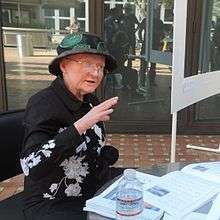International Movement Writing Alphabet
The International Movement Writing Alphabet (IMWA) is a set of symbols that can be used to describe and record movement. Its creator, Valerie Sutton, also invented MovementWriting, which employs IMWA in four general application areas: SignWriting for sign language, DanceWriting as a form of dance notation, MimeWriting for classic mime, and SportsWriting for ice skating and gymnastics.
Identification numbers
The IMWA has more than 27,000 elements that are represented by unique identification numbers. Each identification number specifies six attributes—category, group, symbol, variation, fill, and rotation—as dash-separated values. The symbol is specified with a three-digit value whereas all other attributes use a two-digit value (e.g., 01-01-001-01-01-01).
There are eight categories: hand, movement, face, head, upper body, full body, space, and punctuation.
There are 40 groups. The keyboard design and symbol palette are based on the 40 groups.
History

The IMWA was originally designed for describing sign language and consequently was named Sutton's Sign Symbol Sequence (SSS) by its inventor, Valerie Sutton. The original symbol set, SSS-95, was limited in size due to memory constraints in personal computers at the time. The SSS-99 symbol set expanded the number of symbols, and the SSS-2002 set was the first to use the current identification numbering system. The final version, SSS-2004, was renamed International Movement Writing Alphabet (SSS-IMWA) to reflect its usefulness in applications beyond sign language.